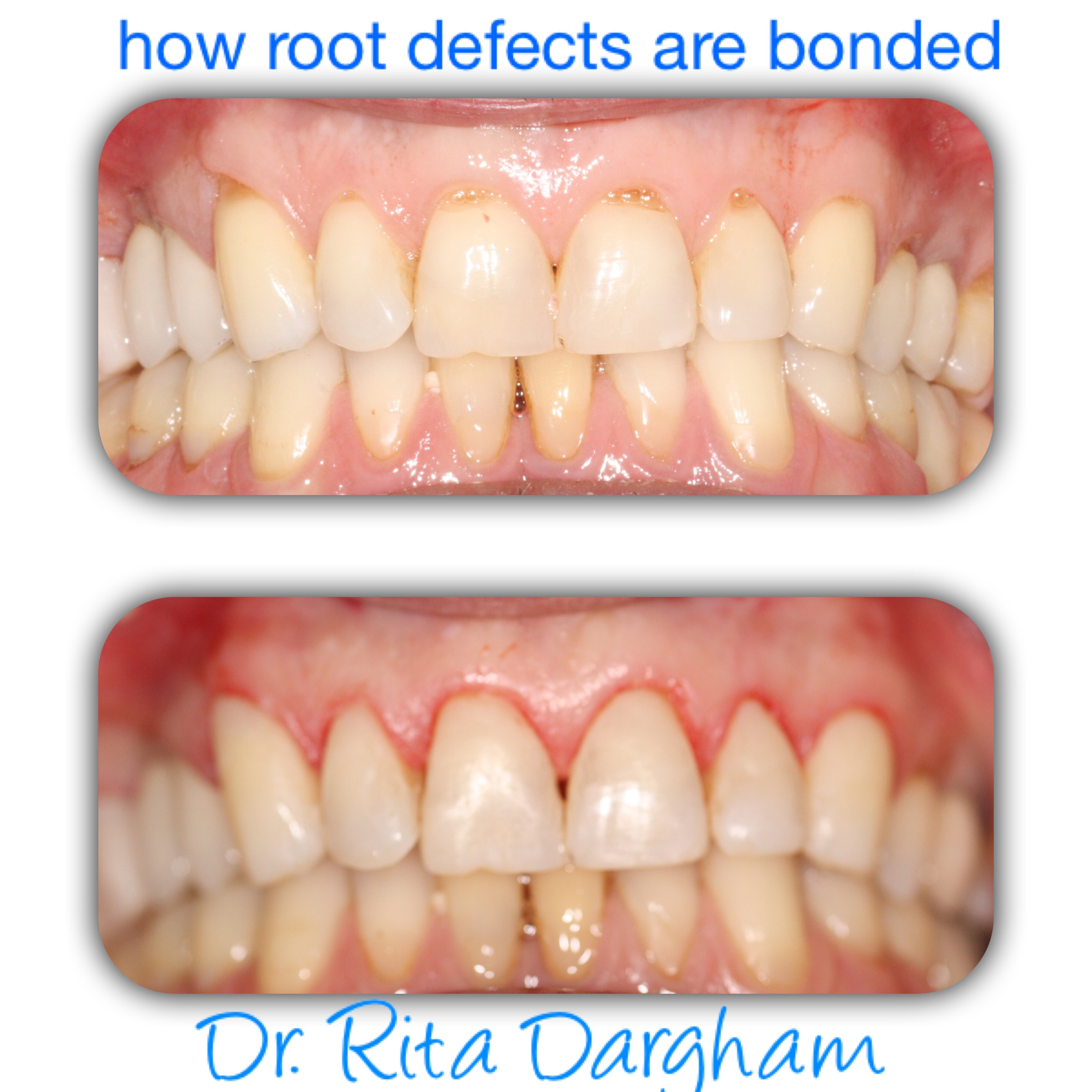HOW BONDING CAN HELP CORRECT UNSIGHTLY AND SENSITIVE ROOT DEFECTS

They are called Root Abraction Lesions and they look like oval shaped notches located at the neck of your teeth.
I am certain many of you have at least one of these very annoying defects along the necks of your teeth. Oftentimes, these are located closer to the front of your mouth. Clearly, having yellow-tinted notches along these surfaces could be unsightly and even uncomfortable. Abfraction lesions, as they are often called, tend to be sensitive to cold, air, and sweet stimuli, causing the person lucky enough to have these to take greater precaution with how and what is consumed. Surely, this issue could become quite annoying and prohibitive. How many of you know what I am referring to?
What exactly are Abraction lesions? The name IS quite strange; however, the actual defect is very common and apparently on the rise. These tooth neck notches are often the result of bending forces applied to the tooth. They are angular in appearance and can be caused by chronic heavy forces on teeth, such as may be produced by clenching or grinding of the teeth ( bruxing ). Additionally, normal forces applied to misaligned teeth ( malocclusion ) are also known to be involved in the creation of these defects.
Although angular initially, these lesions could, with time, appear more rounded due to the regular action of tooth brush abrasion. And, when chronically exposed to an acidic environment, whether through one's diet or as a result of pathologic acidity ( gastric reglux ), this rounding process is expected to move more rapidly.
Abfractions may be treated in various ways, depending on the their size and severity. Outlined below are just a few ways we can address these:
- Do nothing if under one millimeter in depth and are not sensitive to temperature or sweets
- Apply desensitizing agents if sensitive and are under one millimeter in depth ( paint-on solutions or special toothpastes containing higher concentrations of flouride )
- Correcting the defect by applying tooth colored composites/resins using the most advanced bonding techniques
- Surgically restoring the defect using connective tissue grafting techniques when indicated
- Restoring the misaligned bite using orthodontics when indicated
- Bite adjustments may be necessary should heavy bite forces be deemed a cause in the development of these lesions
- The use of a nightly night guard or bite splint is recommended to help reduce the chronic and heavy forces applied to the dentition
From personal experience, my use of dental bonding in the restoration of these lesions has been a very rewarding experience as I see the beautiful result. Watching my patients' expression as they see how beautiful their teeth look once restored, and later listening to them tell me how wonderful it is to once again be able to eat and drink whatever they like, is what I wake up for everyday.
Please contact me should you be suffering from these unsightly and uncomfortable lesions. Remember, we are here to assist you in achieving the "Smile You'd Be Proud To Wear...ANYWHERE!"


